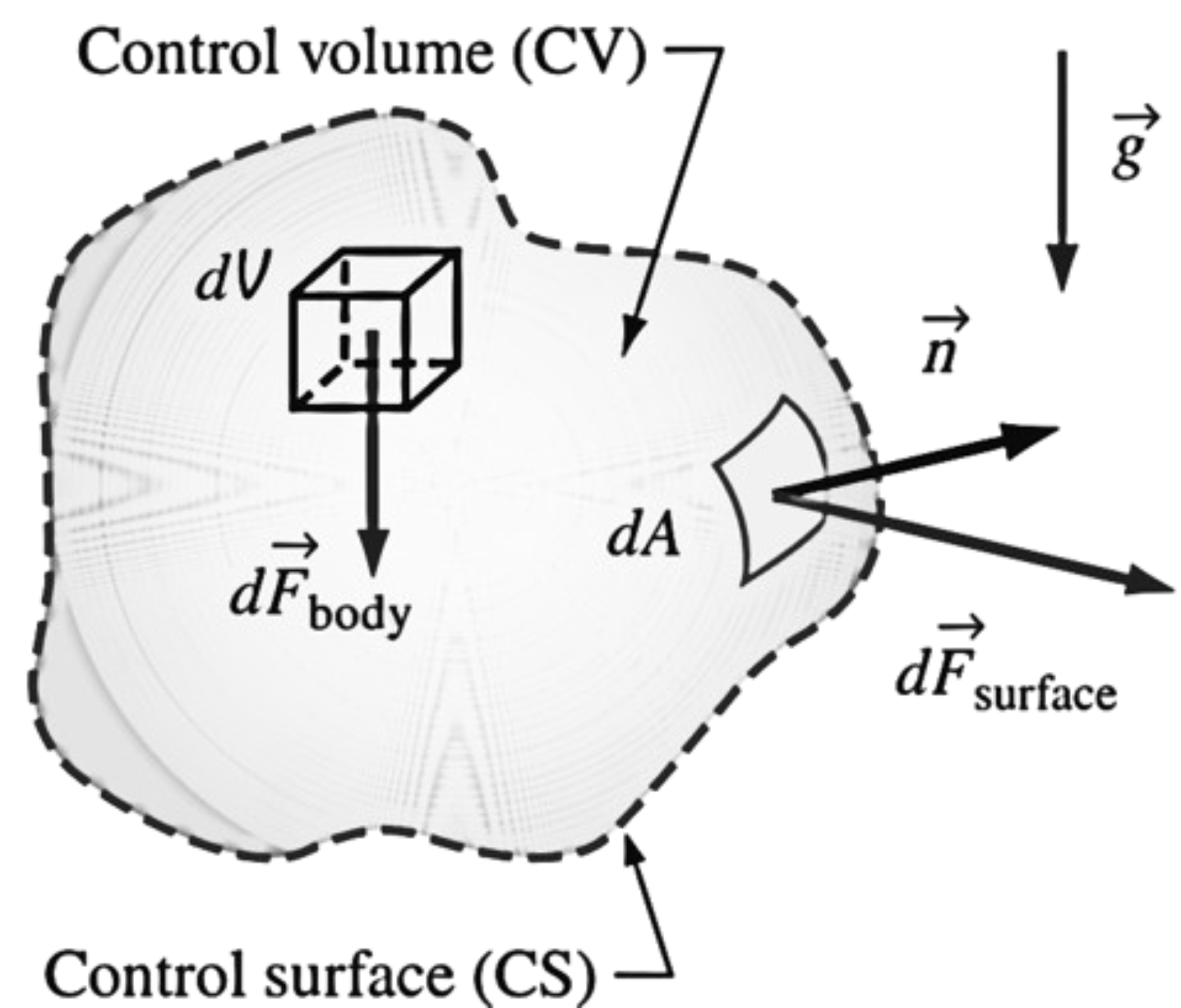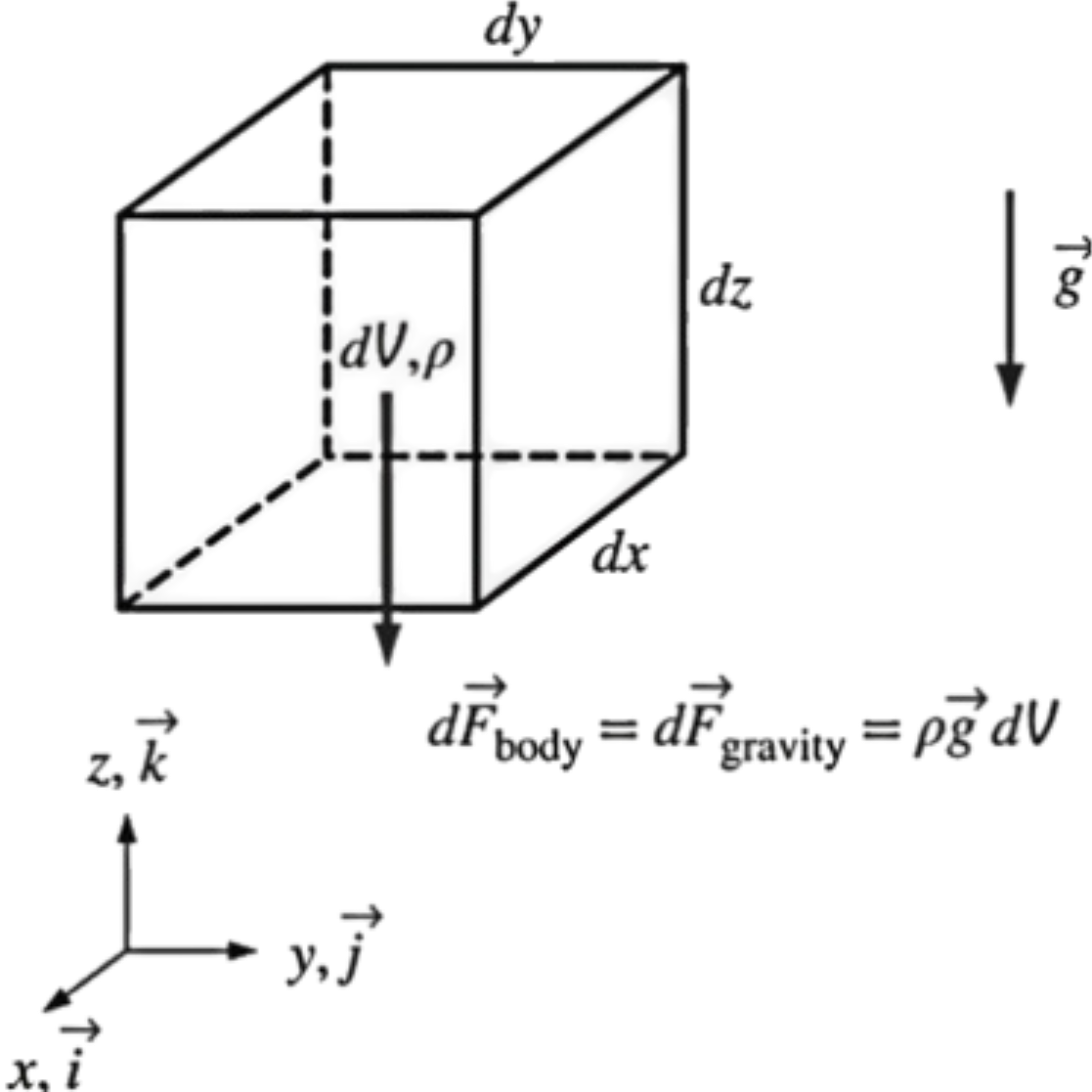The forces acting on a control volume consist of body forces that act throughout the entire body of the control volume (such as gravity, electric, and magnetic forces) and surface forces that act on the control surface (such as pressure and viscous forces and reaction forces at points of contact). In control volume analysis, the sum of all forces acting on the control volume at a particular instant in time is represented by \( \sum \vec{F} \) and is expressed as
Total force acting on control volume \(
\sum \vec{F} = \sum \vec{F}_{\text{body}} + \sum \vec{F}_{\text{surface}}
\)
\(
\sum \vec{F} = \sum \vec{F}_{\text{body}} + \sum \vec{F}_{\text{surface}}
\)

The most common body force is that of gravity, which exerts a downward force on every differential element of the control volume
Gravitational force acting on a fluid element:
\[
d\vec{F}_{\text{gravity}} = \rho \vec{g} \, dV
\]
Gravitational vector in Cartesian coordinates:
\[
\vec{g} = -g\vec{k}
\]
Total body force acting on control volume:
\[
\sum \vec{F}_{\text{body}} = \int_{\text{CV}} \rho \vec{g} \, dV = m_{\text{CV}} \vec{g}
\]
1Fluid Mechanics: Fundamentals and Applications Fourth Edition. Çengel and J. M. Cimbala, McGraw-Hill, New York (2018).